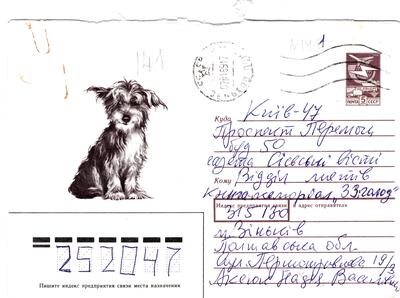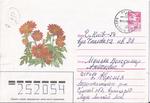Letter sent from: Zinkiv, Poltava oblast
Letter describes events in (1932-1933): Zinkiv, Kharkiv oblast
Current location name: Zinkiv, Kharkiv Poltava oblast
Nadiia Aksiuk was about seven years old at the time of the famine. She was about to start school but could not because she was swollen with hunger. At the time, she lived with her mother, a teacher, in Zinkiv, a raion center in Kharkiv Oblast, now Poltava Oblast. She draws contrasts and parallels between the three famines that her family suffered through and condemns Stalin.
Search brigades came to their home and took away all the remnants of potatoes and grain, as well as beans, sunflower and pumpkin seeds that her mother had set aside for planting the next year. She recalls collecting food waste from the garbage of “those bosses who knew no famine,” and eating mock foods. The soviet trading network called Torgsin was a way out for those who had valuables they could sell.
She survived because she was taken to her father’s family in Kryvyi Rih, in the Donbas. Her father was
an agronomist in a radhosp. Many of the relatives and neighbors they left behind died. Her own mother barely survived.
Aksiuk recalls two more famines: 1921, when her mother’s father and sister died. Then, people were
dying of typhus and dysentery as well as of starvation. The 1946-47 famine was caused by the post-war decline, and people were eating mock foods, weeds and even bark to survive. She calls the famine artificial, organized by Stalin, “like King Herod, even worse.” Aksiuk emphasizes the importance of commemorating and remembering victims and the need for a monument to the victims.
Ukrainian transcription and English translation available.



